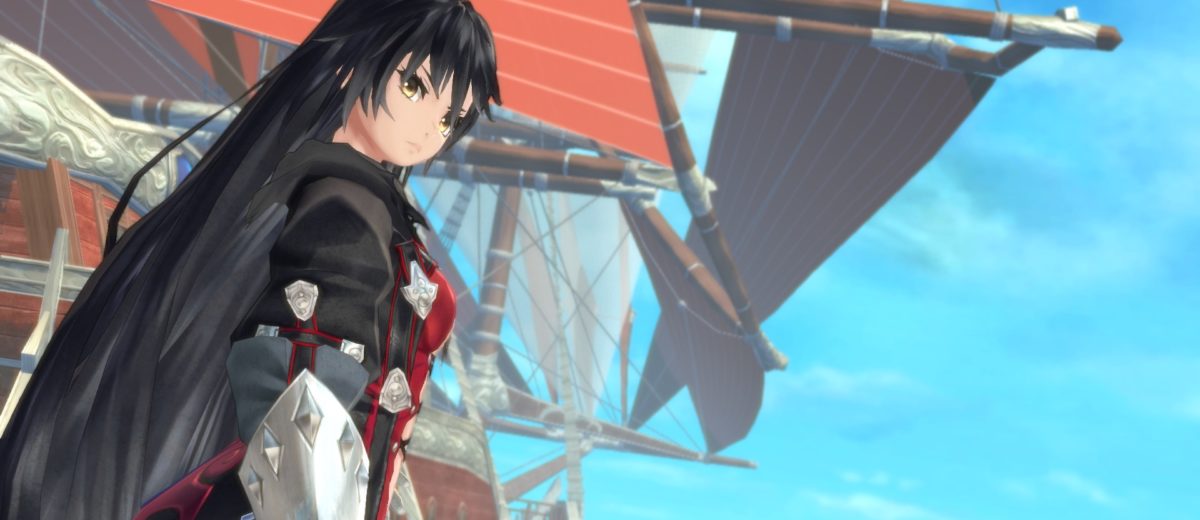Bandai Namco’s flagship RPG, colloquially known as the Tales series, started in 1995 with Tales of Phantasia for the Super Famicom. The Tales franchise has presented gamers with a steady stream of games, and the upcoming Tales of Berseria is the 16th and latest in the main series. Unlike most main games in the Tales franchise, Tales of Berseria takes place in the same world as, and is the prequel to, Tales of Zestiria. Moreover, Tales of Berseria is one of the few Tales games to receive a demo prior to release, giving fans and newcomers a chance to see what the new title is all about and what changes it brings to the Tales franchise. Sadly, these changes are less than impressive.
When the demo starts, players are given the option to listen to the original Japanese audio or English dub. Gameplay is then split into two modes: scenario mode and battle mode, both of which give players access to all the main characters: the half-daemons Velvet and Rukurou, the spirits (i.e., Malak) Laphicet and Eizen, and the humans Magilou and Eleanor. In the demo, Eleanor is portrayed as very compassionate if a little overbearing, especially towards Laphicet, who is as innocent as his appearance. Most of the other characters treat Laphicet as if he’s a little child, especially Eleanor. Eizen is the exact opposite of Laphicet, despite also being a Malak. Eizen is serious throughout the demo and shows no emotion other than the stereotypical anime tough-guy scowl, even when he is genuinely being friendly. Sadly. Velvet has an inconsistent personality, switching between rage-filled in battle and downright vapid outside of battle.
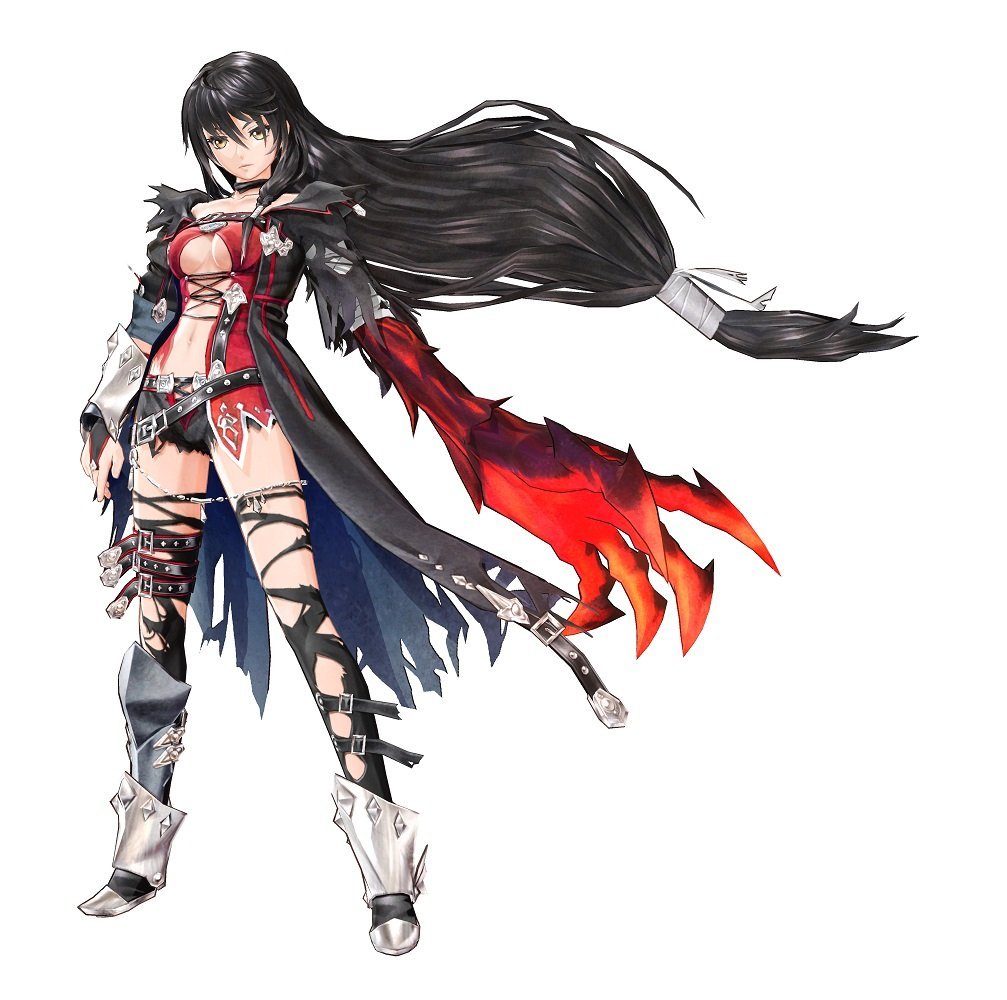
Velvet
The demo decently establishes each character’s traits and personality, thanks to the scenario mode’s skits. In the demo’s two memorable skits, Rukurou and Eizen warn Laphicet how “untrustworthy women are,” and Eleanor teaches Laphicet about birds that live on the beach. The demo included a third skit, but it is a forgettable lore dump about Malaks all without explaining what Malaks actually are. While the battle mode does not include skits, characters still banter after battles to show that, despite potentially clashing personalities, at least they still respect one another.
Bandai Namco made a good decision to separate the demo into two modes. Both modes allow gamers to wander each location’s maps, collect items, open chests, interact with the environment, and play around with various computer-controlled character tactics. Each mode shows off various gameplay features, such as the aforementioned skits in the scenario mode and the glowing tombstone-shaped hoverboard, known as the geoboard, in the battle mode. Furthermore, each mode shows that players can visit locations to either further the story or hunt powerful monsters in what I can only assume are sidequests.
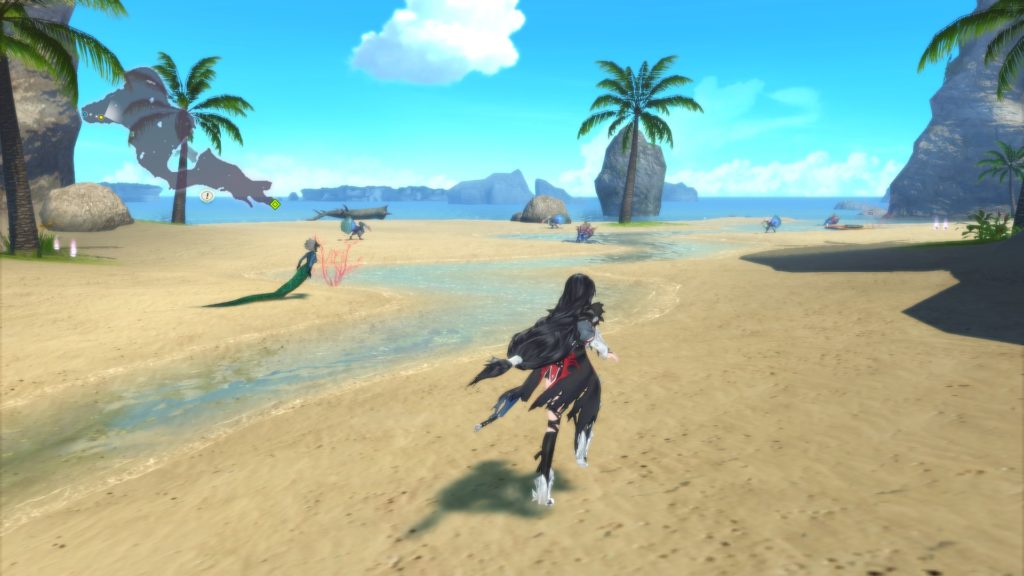
Tales of Berseria retains numerous game mechanics from past Tales entries, such as the equipment system, blue dotted line map transitions, artes, and skits. However, Berseria appears so far to be making several important changes to the tried-and-true Tales formula, some of which are better than others. For example, players must collect floating orbs scattered around the maps before they can open chests. This forces players to explore maps to find both the chests and the orbs. Sadly, several chests require an unreasonable number of orbs, which adds an unwanted level of tedium to the game as players backtrack to find that one necessary orb they missed five maps ago. Ideally, games should reward players who search for chests with the ability to immediately open them; Tales of Berseria’s chest and orb system is just more complicated than it needs to be.
Another major change is how Tales of Berseria seems to handle combat. In previous games, players could use either standard attacks or artes. While gamers could attack enemies with standard attacks as much as they wanted, artes required mana, and were thus limited by a character’s available mana pool. Tales of Berseria combines standard attacks with artes, thus doing away with the need for mana. Computer-controlled characters can cast whatever artes they are assigned, but players have to assign artes to a limited number of buttons and button combinations. These changes are, for the most part, welcome. Combat is now very fast-paced and characters can now cast devastating magical artes without having to guzzle mana potions. However, depending on how players assign artes throughout the course of the demo, battles can be won simply by mashing buttons.
Tales of Berseria also introduces the “souls system” to combat. Each character starts a fight with three souls (four if the player sneaks up on an enemy from behind before combat). These souls limit how many times a character can attack with artes before his or her attacks no longer deal damage. Souls completely refill one or two seconds after the player stops attacking, at which point players can start attacking again. Characters can also steal an enemy’s souls and vice versa. Furthermore, enemies can have anywhere between one and four souls, while characters can have up to five souls.
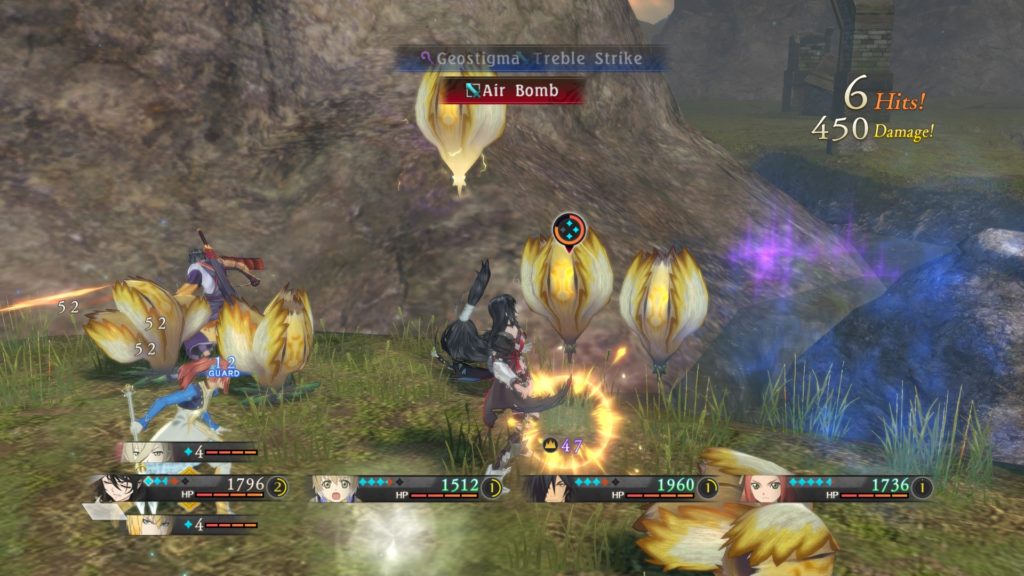
The souls system also grants each character a special “Break Soul” ability. Players can use these powerful abilities in the middle of an attack combo, or if a character has three available souls. Break Soul skills heal the character who uses them and fills up a special “Blast Gauge” that players can use either to switch out one character for another (very useful when one character is out of health) or to cast ultra-powerful “mystic artes.” The characters’ ability to self-heal is very welcome, and Break Soul abilities are extremely useful in combat.
However, in general, the soul system is a double-edged sword. Players who are lucky enough to have at least four souls can execute long attack combos and steamroll through enemies. On the other hand, players with two souls or less will find themselves in an uphill battle where they are unable to deal reliable damage or use a Break Soul. Finally, some Break Souls are too restrictive and situational. Case in point, Eizen can only use his Break Soul, Draconic Drive, on enemies that are stunned or knocked down. Enemies, especially boss monsters, that can’t be stunned or knocked down leave Eizen at a serious disadvantage. Normally the player could switch Eizen out for another character, but if Eizen has an empty Blast Gauge, he cannot switch with another character or refill the gauge, leaving the player stuck with an ineffective character in a game with a combat system that encourages switching out ineffective characters. Situations such as these add an artificial level of difficulty and annoyance to the battle.
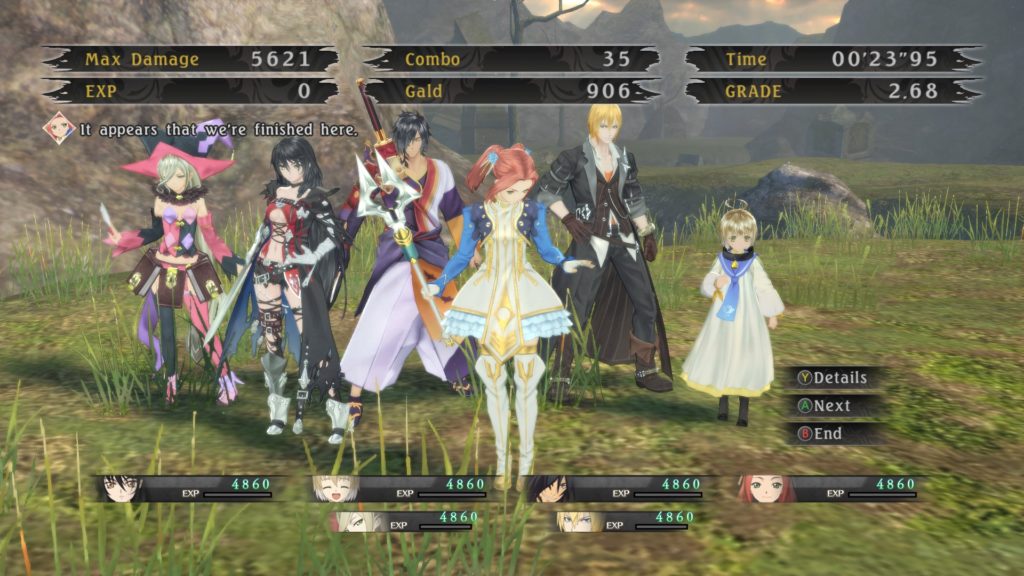
As many are aware, Bandai Namco has a history of creating horrible PC ports for its games. Tales of Symphonia, one of the most popular Tales games created, released on Steam as a broken and bug-ridden mess, rife with typos, missing graphical options, and framerate issues that made the PC version inferior to the original Gamecube version. While Tales of Berseria is luckily typo free (at least as far as the demo is concerned), the game still suffers from framerate issues.
The game ran smoothly while wandering the map but occasionally slowed down during combat. This slowdown happened at random, but most often when an overly-flashy and particle effects-heavy arte was on-screen. Additionally, the Tales of Berseria demo crashed on me once. These problems are slightly troubling, as my computer, while not an absolute powerhouse, is capable of playing DOOM on high settings at reliable framerates that never dip below 40 frames per second. Tales of Berseria is nowhere near as graphically demanding as DOOM and shouldn’t have these random slowdowns. While problems such as these can easily be fixed with a patch, video games still should not be launched in unreliable states that can (or to be more realistic, may or may not) be fixed in the future; just look at the horrific PC port of Batman: Arkham Knight and its lack of support.
Optimization issues aside, the Tales of Berseria demo is a good barometer by which players can measure their interest in the game. The demo gives gamers a healthy dose of the combat system, gameplay mechanics, and characters. While the demo demonstrates a spoiler-free sample of the story, some players might feel lost and confused, especially by the use of terms such as “Malak” that are never explained in the demo. While not all the changes to the Tales game formula land quite as well, the demo itself still demonstrates the changes clearly, leaving the door open for the game itself to develop and capitalize on the them to a greater degree.
The Tales of Berseria demo is currently available for the PlayStation 4 and PC via Steam, and the full game is scheduled to release January 26th for the PC, PlayStation 3, and PlayStation 4.


